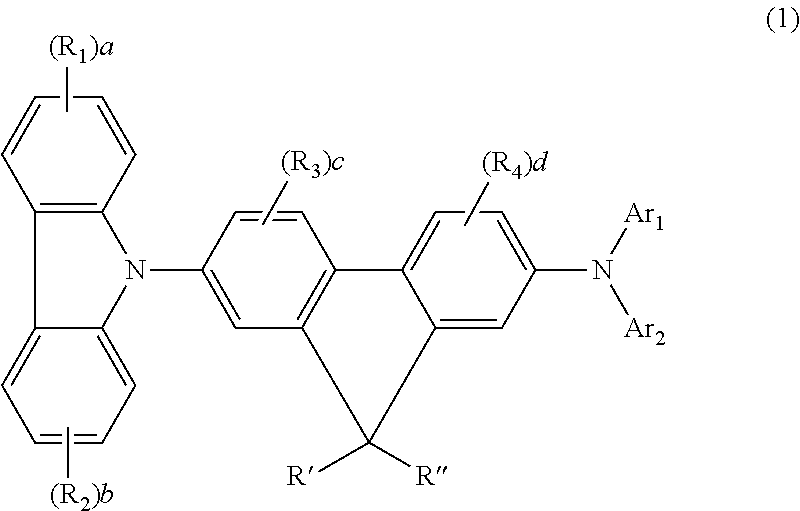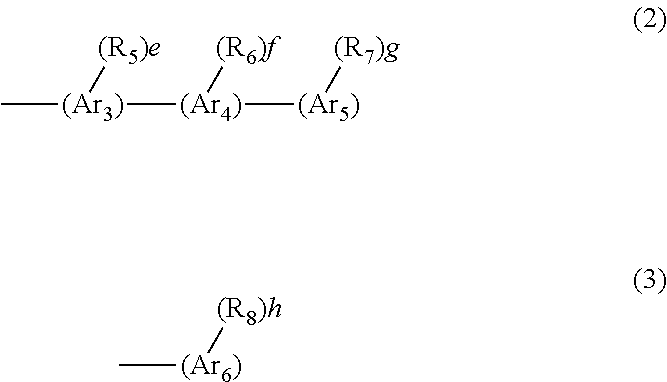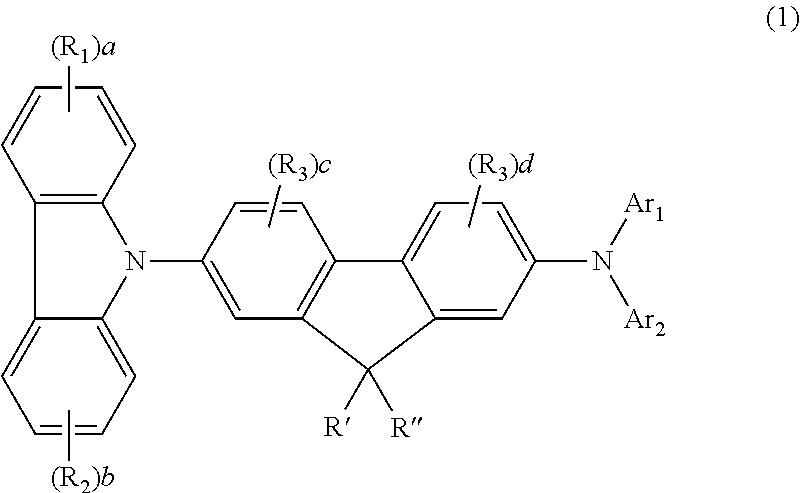Aromatic amine derivative and organic electroluminescent device using the same
- Summary
- Abstract
- Description
- Claims
- Application Information
AI Technical Summary
Benefits of technology
Problems solved by technology
Method used
Image
Examples
preparation example 1
Synthesis of Intermediate 1
[0237]In an argon gas stream, a 1,000 ml three-necked flask was charged with 47 g of 4-bromobiphenyl, 23 g of iodine, 9.4 g of periodic acid dihydrate, 42 ml of water, 360 ml of acetic acid, and 11 ml of sulfuric acid. The mixture was stirred at 65° C. for 30 minutes and reaction was allowed to proceed at 90° C. for 6 hours. The product was placed in ice water, filtered off, washed with water, and washed with methanol to give 67 g of white powder. FD-MS analysis identified the powder as Intermediate 1.
preparation example 2
Synthesis of Intermediate 2
[0238]The same procedure as that of Preparation Example 1 was followed except that 2-bromo-9,9-dimethylfluorene was used instead of 4-bromobiphenyl, yielding 61 g of white powder. FD-MS analysis identified the powder as Intermediate 2.
preparation example 3
Synthesis of Intermediate 3
[0239]In an argon gas stream, a 500 ml three-necked flask was charged with 45 g of Intermediate 1, 21 g of carbazole, 240 mg of copper(I) iodide, 56 g of tripotassium phosphate, 160 ml of 1,4-dioxane, and 2.5 ml of trans-1,2-cyclohexanediamine, and reaction was allowed to proceed at 130° C. for 24 hours. The product was extracted with toluene, dried over magnesium sulfate, and concentrated in vacuo. The crude product was then purified on a column, recrystallized from toluene, filtered off, and dried to give 33 g of Intermediate 3 in the form of white powder.
PUM
 Login to View More
Login to View More Abstract
Description
Claims
Application Information
 Login to View More
Login to View More - R&D
- Intellectual Property
- Life Sciences
- Materials
- Tech Scout
- Unparalleled Data Quality
- Higher Quality Content
- 60% Fewer Hallucinations
Browse by: Latest US Patents, China's latest patents, Technical Efficacy Thesaurus, Application Domain, Technology Topic, Popular Technical Reports.
© 2025 PatSnap. All rights reserved.Legal|Privacy policy|Modern Slavery Act Transparency Statement|Sitemap|About US| Contact US: help@patsnap.com



